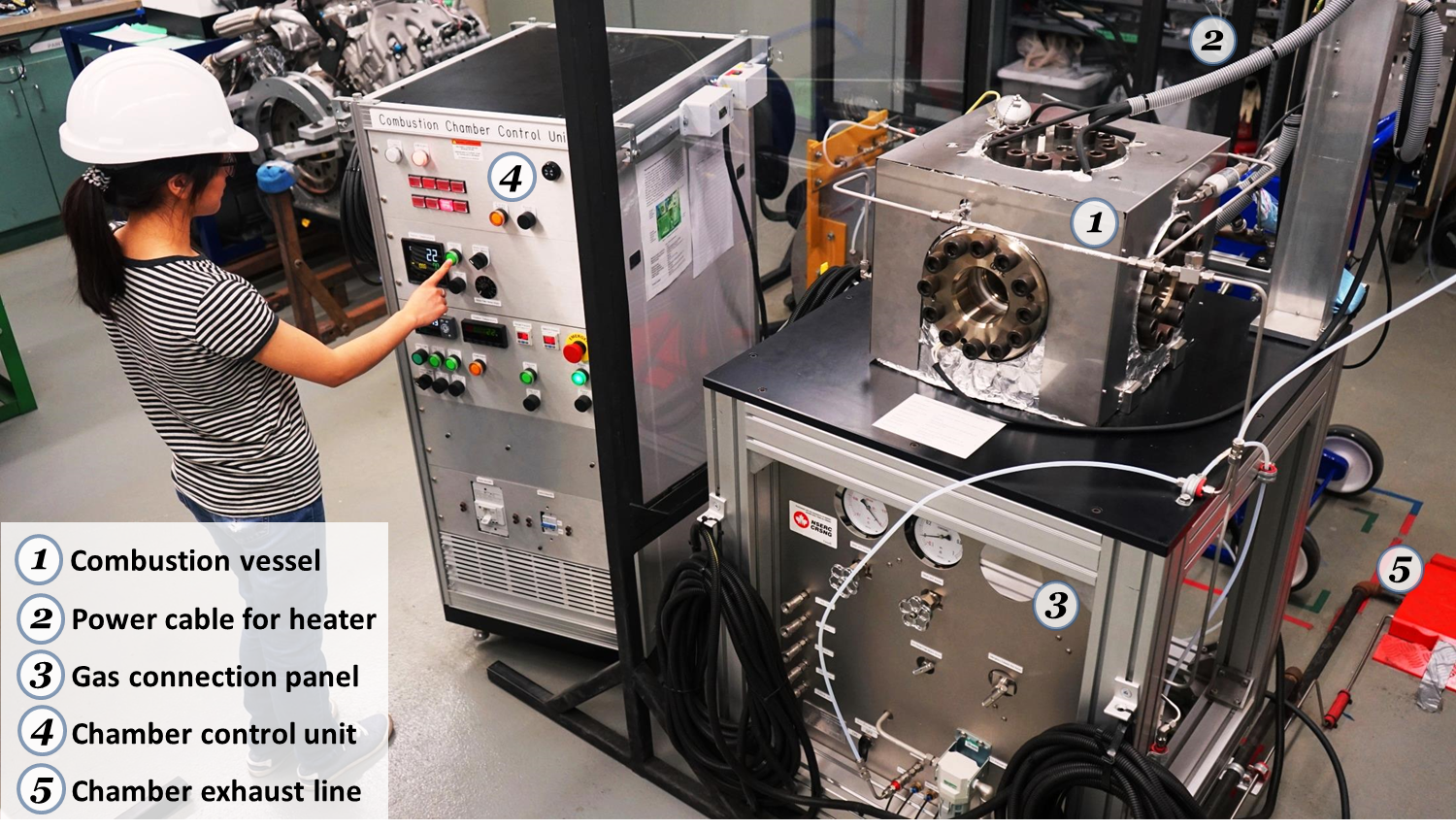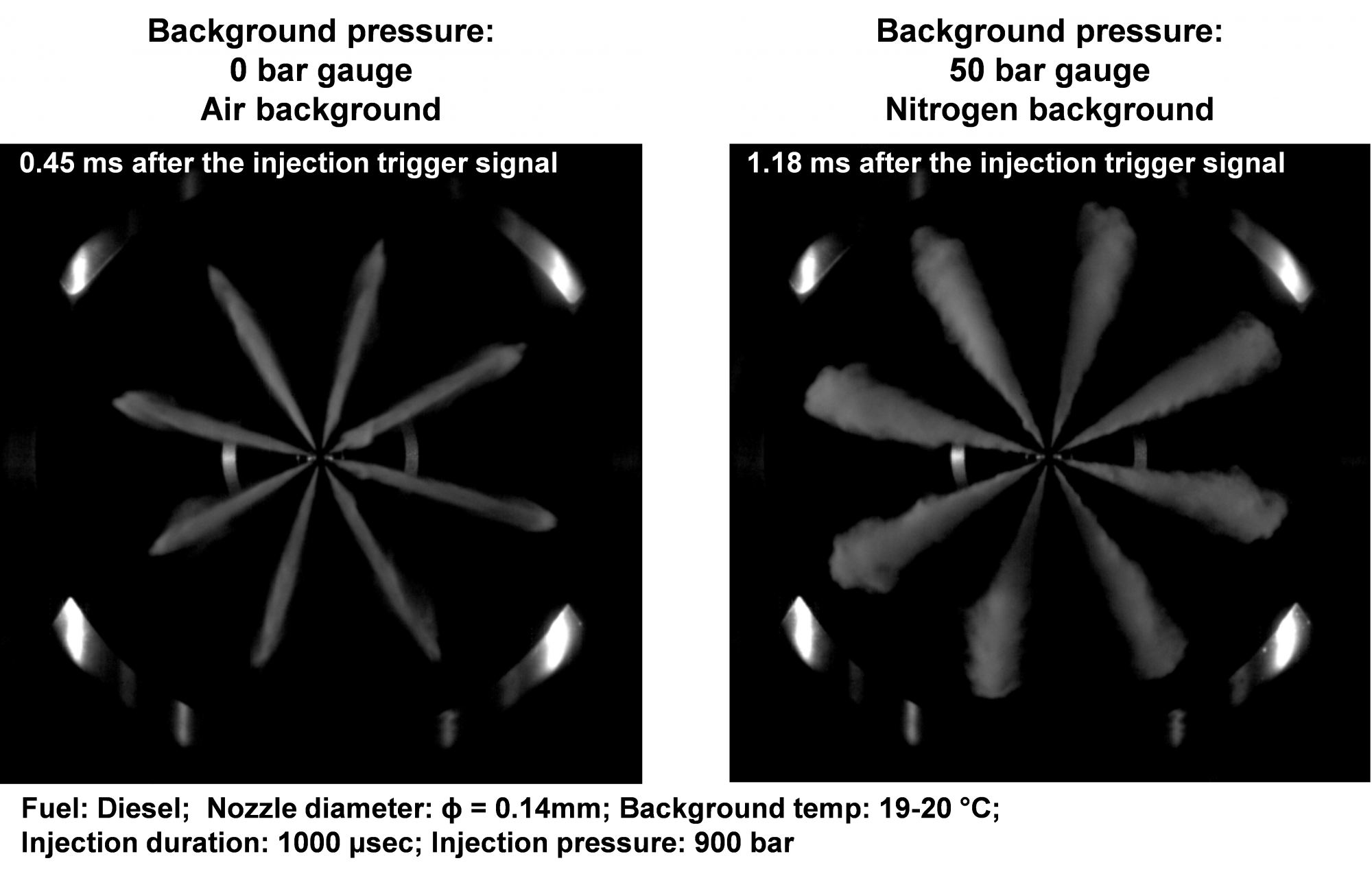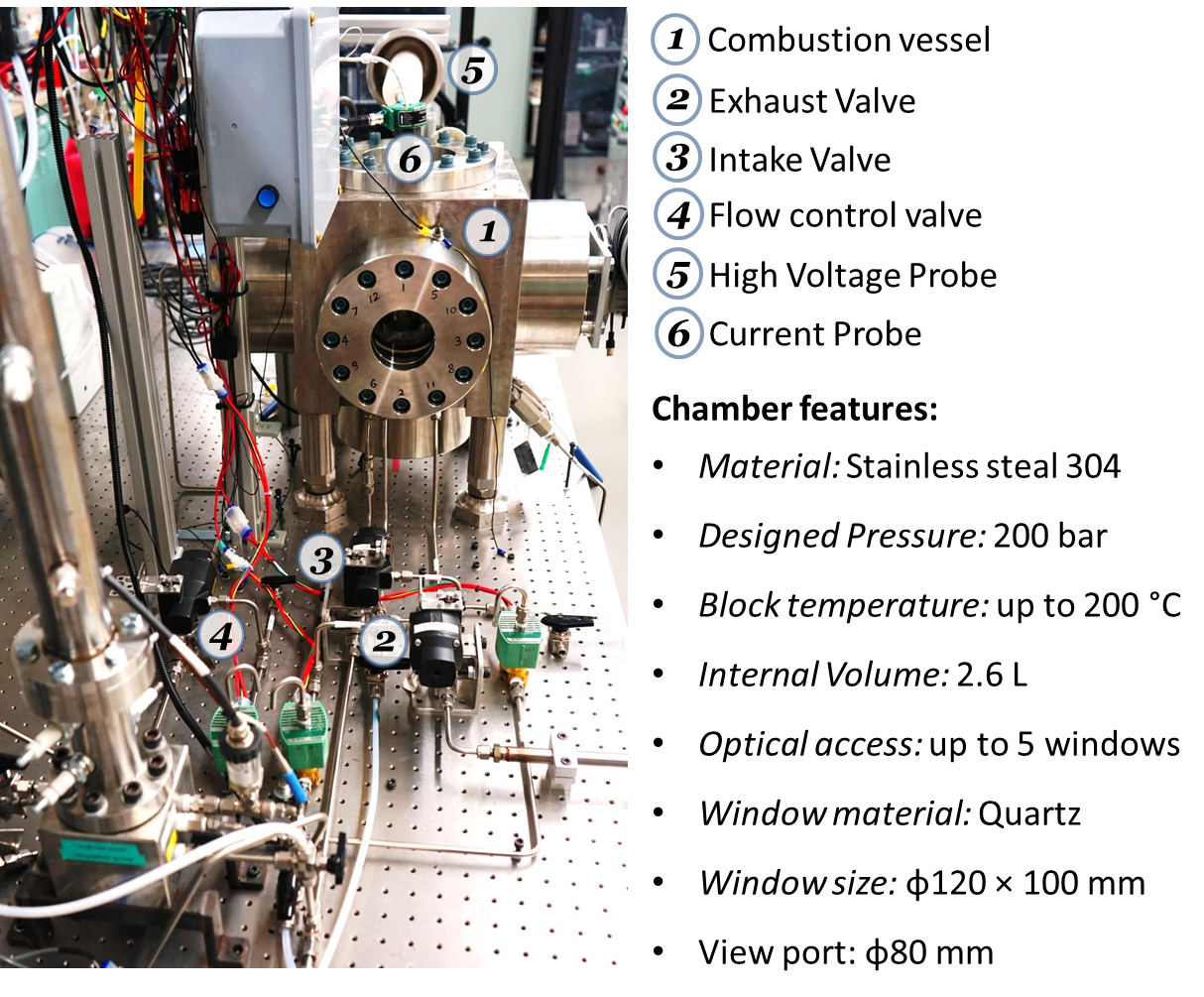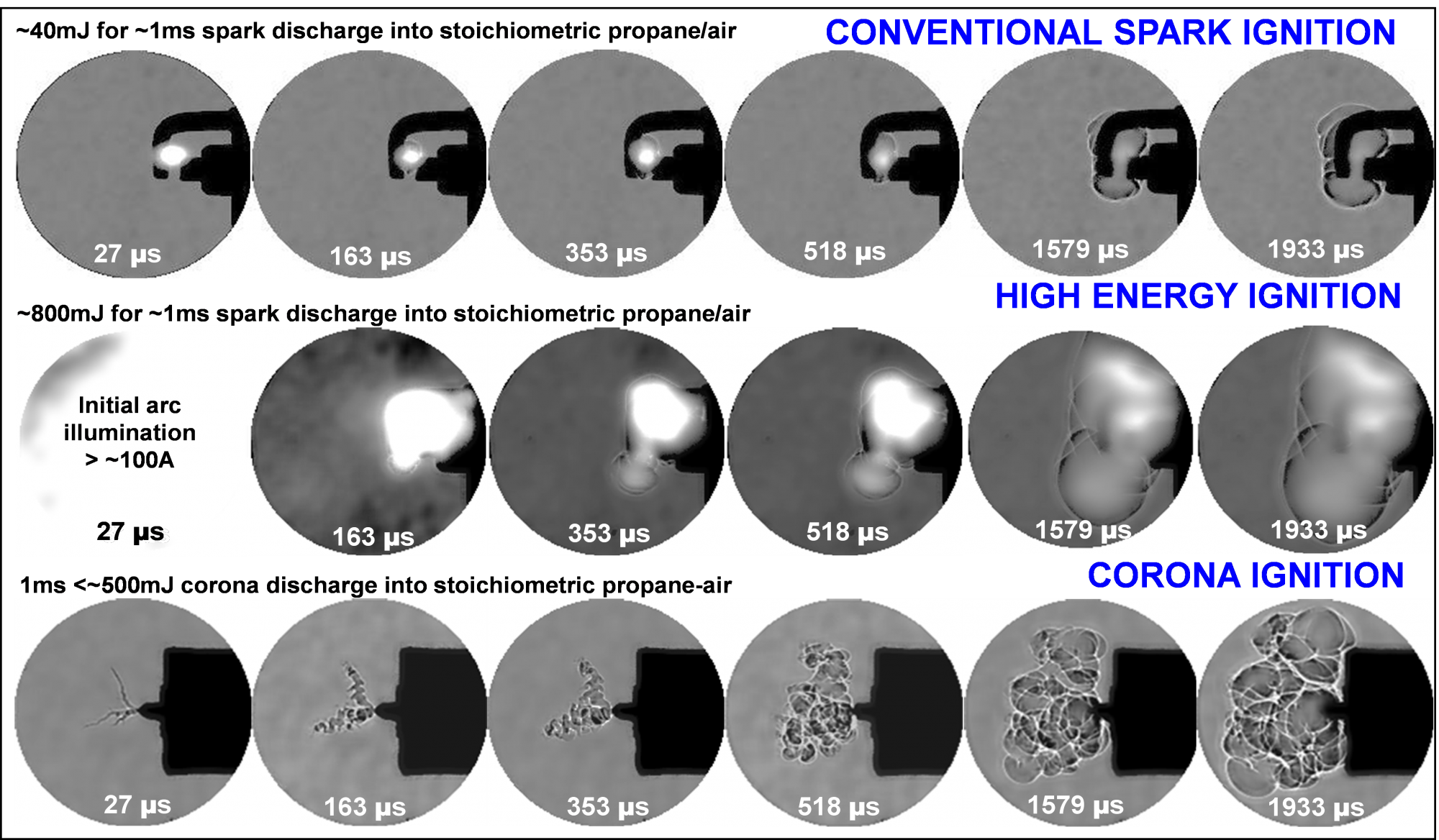Back to Lab Facilities
Two high pressure/temperature optical chambers are set up in the Clean Combustion Engine Lab. The volumes are 2.95L and 2.6L respectively. They are used for multiple research purposes such as the fuel injection research, ignition research, and combustion research. By using various optical methods, the injection or ignition, combustion process can be directly visualized and analyzed.
2.95 L High pressure/temperature combustion vessel
The first high pressure/temperature combustion chamber system consists of a 2.95 L constant volume combustion chamber, a mounting table with gas supply connections, a vacuum pump and a control unit. A high pressure diesel injector is installed on the chamber. High pressure diesel spray inside the chamber can be observed through quartz glass windows.The maximum working pressure inside the chamber is 15 MPa, and in-chamber background gas temperature can be increased up to 200 °C by the heaters installed on the chamber body. In addition, this system can create diesel engine like high pressure and temperature (4.0~5.0 MPa, 550~650 °C) conditions within a short period of time by using the pre-burn method.


2.6 L High pressure/temperature combustion vessel
A second constant volume chamber was designed and manufactured by the Clean Combustion Engine Lab and Ford Motor Company of Canada. It can operate under pressures of up to 200 bar and chamber block temperature of up to 200 °C. The chamber has a cubic body with six accessible sides, the top side fitted with an assembly of the diesel injector and adaptor, and other five sides with modular-designed optical window assemblies for camera recording and illumination. The gas exchange ports, pressure and temperature measurements, and pressure relief valves are located on the main chamber body.

14 mL optical combustion vessel
A small optical constant volume chamber was designed mainly for ignition research in the Clean Combustion Engine Lab. It has two optical windows and the optical access is 25.4 mm. The chamber is very compact, serving as a convenient equipement in the ignition research.


